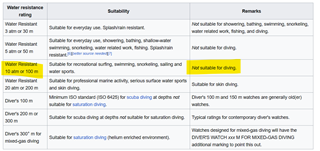Hi, I would like to know what is the underwater maximum depth supprted by the fenix 7 (std size, sapphire solar) ?
Can I bring it with me at 40m depth ?
I do not want to use it as a diving computer ; just have it for compass for example and possibly heart rate tracking...



